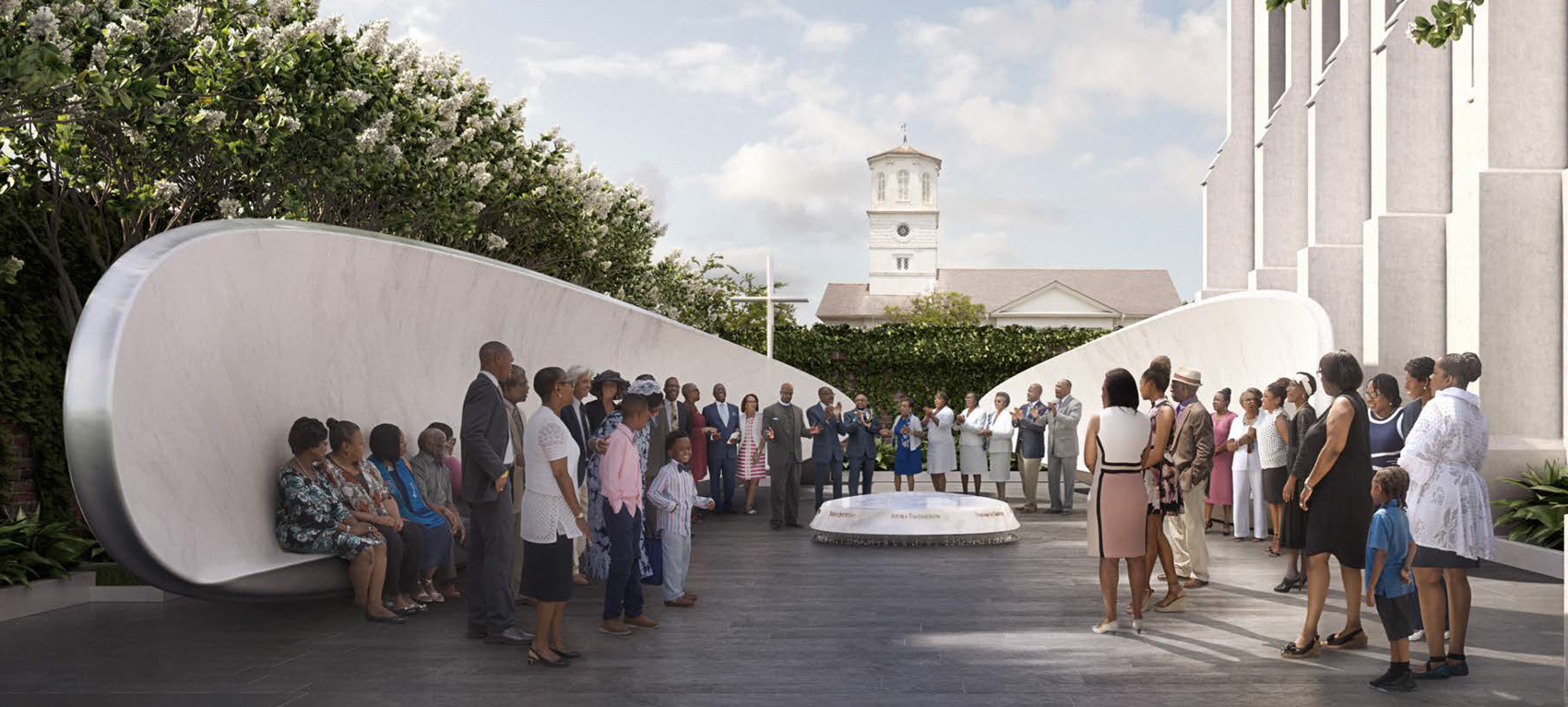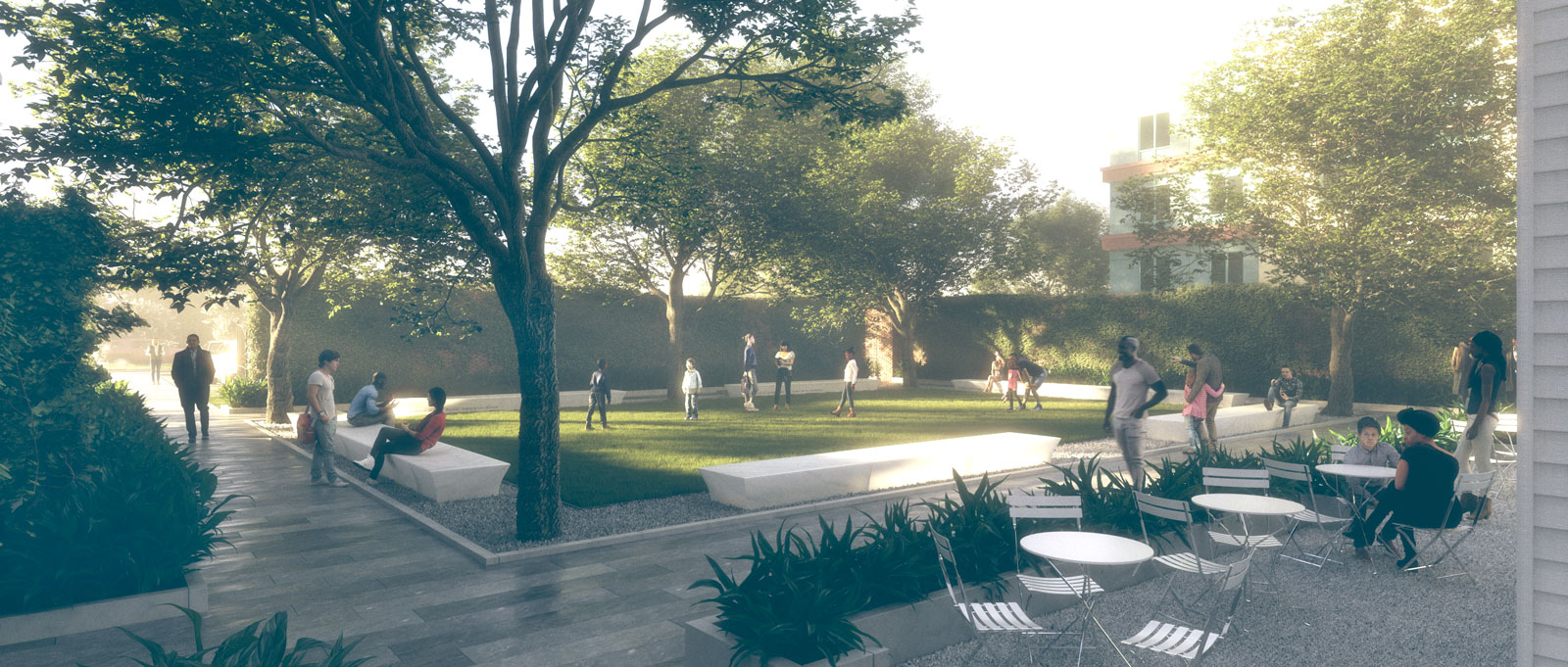
The Emanuel Nine Memorial encourages people to reconcile their hearts and actions with the example set by families of the Emanuel Nine. The memorial will also honor their lives by teaching new attitudes and behaviors to reverse racism.
The Memorial
The inspiration for the memorial design is drawn from reflecting upon the lives and sacrifices of the Emanuel Nine: Reverend Sharonda Coleman-Singleton, Mrs. Cynthia Graham Hurd, Mrs. Susie J. Jackson, Mrs. Ethel Lee Lance, Reverend DePayne Middleton-Doctor, Reverend Clementa Pinckney, Tywanza Kibwe Diop Sanders, Reverend Daniel Lee Simmons, Sr., and Mrs. Myra Singleton Quarles Thompson.
The memorial design reflects the powerful and inspiring way in which the Emanuel Nine family members relied on the bedrock of their faith to reverse the spread of hate with a message of unyielding love and forgiveness.
The Memorial Courtyard
The design process began by reframing the church grounds to create a sacred space for a memorial and a garden space to honor the survivors. A Memorial Courtyard was designed in honor of the spirit and fellowship of the Emanuel Nine as space for the congregation and the community. It encourages positive change, while also creating a space to reflect in quiet contemplation.
This coming together is encouraged through the creation of two fellowship benches facing each other. An opening between the two benches widens towards the entrance, welcoming strangers to enter and join in the spirit of community. The high backs of the benches arc up and around, like sheltering wings. They provide a sense of enclosure, and like a pair of arms, cradling visitors inside this space.
At the center of the Memorial, the curve of the stone benches encircle a marble fountain. The names of the Emanuel Nine are carved around the fountain’s edge. Water emanates from a cross-shaped source, filling the basin and gently spilling over the names of the Emanuel Nine.

Who survived?
Miraculously, five individuals, including two children, escaped death during the massacre which left people across the Charleston community and country devastated and wondering how to move forward.
Today, the church grounds have been reorganized to create a sacred space honoring those slain, as well as a garden space to honor the survivors. This will be a place of contemplation, communion and conversation, a catalyst for creating a culture where racism and violence exist no more.
Survivors’ Garden
The Survivors’ Garden is dedicated to life and resiliency. A newly landscaped church yard will enhance the daily life of the church and its members. A lawn surrounded by six stone benches and five trees is dedicated to the five survivors of the attack, and the congregation.
Contemplation Basin
From the Survivors’ Garden, a pathway leads to an opening towards the back of the Memorial Courtyard. Beyond the fellowship benches a cross above a simple altar is revealed, offering visitors a quiet place to linger in thought and prayer.


